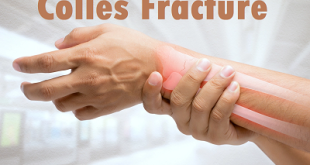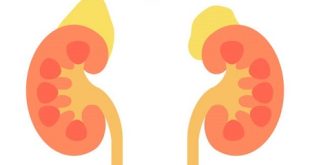What does it mean to have crystals in your urine?
Crystals in urine occur when there are too many minerals in your urine and not enough liquid. The tiny pieces collect and form masses. These crystals may be found during urine tests (urinalysis). Having crystals in your urine is called crystalluria.
Some crystals don’t cause problems. Others can get big and form stones that get stuck in parts of your urinary tract and cause blockages. Blockages can cause serious problems, like acute kidney injury (AKI), which is also called acute renal failure (ARF).
What are common types of crystals found in urine?
Types of crystals that a lab tech might see in your urine include:
- Ammonium biurate.
- Bilirubin.
- Calcium oxalate or calcium phosphate.
- Cystine.
- Hippuric acid.
- Leucine.
- Struvite (magnesium ammonium phosphate).
- Tyrosine.
- Uric acid.
- Xanthine.
The laboratory test can identify the type of crystals by the shape of the crystals under a microscope. Some of the crystals may have no identifiable shape (amorphous).
The pH (acidity) of your urine can contribute to the type of crystals that happen.
Causes and risk factors of crystalluria
Let’s examine some of the causes of having crystallized urine and what you can do about it. At the end of the article, you can find some helpful advice on how to keep your urinary tract healthy and to avoid conditions that make crystal deposits form in the urine.
Dehydration
In order to flush waste products from your body and reduce the number of crystals in your urine, you need to drink enough fluids. Dehydration can have serious health consequences and can cause fatigue, spikes in blood pressure, and even kidney stones.
A study on the effects of dehydration on marathon runners found a higher concentration of urinary salts in urinalysis. Urine tests of marathon runners 11 days after racing showed elevated levels of oxalate dihydrate crystals in urine.7
The best way to make sure and prevent a buildup of urinary crystals is to drink enough fluids. Keeping well hydrated helps to flush toxins and mineral deposits from your kidneys. One way to boost your water intake is to try one of my infused water recipes. These refreshing drinks contain very little calories but are packed with goodness, vitamins, and minerals.
Urinary tract infection (UTI)
A urinary tract infection (UTI) can cause crystalluria, pain when urinating, a foul smell from urine, foamy urine, cloudy urine with sediment, dark colored pee and the urge to frequently use the bathroom. UTIs are caused when bacteria enter the urinary tract or you get an infection of the urethra.
Kidney or bladder stones
If uric acid crystals, calcium oxalate crystals, or cystine crystals don’t get flushed out of your urine, you could end up with kidney or bladder stones. If you have severe flank pain and find it painful to pee, your doctor will check for the presence of crystals in your urine.
Side effect of Medications
One of the causes of crystals in urine is taking certain medicines. As well as your liver, your kidneys play a role in metabolizing medications in the body. Depending on the interaction between various medications and the amount of fluid you drink, high levels of crystals in your urine could appear in urinalysis.
Change in urine pH levels
If your urine is too acidic or too alkaline, you are at risk of urinary crystallization. This could increase the risk of developing kidney stones, a urinary tract infection, or blockage in the urinary tract.
Buildup of uric acid
A buildup of uric acid in the body can cause crystals to deposit in joints and cause gout or form into stones in the kidneys. According to Dr. William C. Shiel on eMedicineHealth, kidney dysfunction can hinder uric acid excretion in the urine. Also, research has found that eating a diet rich in protein and seafood increased uric acid whereas consuming plain yogurt every day helped to lower blood uric acid.
Signs and symptoms of crystalluria
A person with urine crystals may experience lower back pain on one side.
Small urine crystals may not always cause symptoms. However, a person with larger urinary stones, or stones that are moving through the urinary tract, may experience a range of uncomfortable symptoms, including:
- Blood in the urine
- Nausea
- Lower back pain on either the left or right side
- Frequent urge to urinate
- Difficulty passing urine
- Burning sensation while urinating
- Pelvic pain and discomfort
- Cloudy urine
- Foul smelling urine
- Fever, if the stone has caused an infection
What conditions and complications can they cause?
If urine crystals form into stones, a person is at risk of developing complications. According to the National Kidney Foundation, some complications of larger, untreated stones include:
- Blockage of the ureter
- Damage to the kidneys
- Damage to the bladder
- Kidney infections
- UTIs
If the crystals do not form into stones, or if the stones are small enough, they will pass out of a person’s body in their urine. Smaller stones may or may not cause symptoms and are unlikely to cause complications.
How is crystalluria diagnosed?
If your doctor suspects that you have urine crystals, they’ll likely first order a urinalysis. In some cases, your doctor may run a urinalysis as part of your wellness visit or annual checkup, even if you don’t have other complaints.
For the urinalysis test, you’ll be asked to provide a urine sample. The lab technician reviewing the sample will first observe it for any color or cloudiness that may indicate an infection. Bilirubin can turn urine a dark tea color, for example. Blood may be evident to the naked eye.
They’ll then use a dipstick to test for components within the urine.
The technician will finally examine the sample under a microscope, where they can actually see the crystals if any have formed.
Depending on what your doctor finds, they may order additional tests. If they find bilirubin in your urine, for example, they may order blood work or an ultrasound to evaluate your liver health. If urine crystals indicate high cholesterol, they’ll order a blood test to evaluate your current cholesterol levels.
Treatment for crystalluria
Treatment will depend on the type of stone that a person has developed or is prone to developing. In some cases, a doctor may recommend over-the-counter pain relievers and advise the person to increase their fluid intake to help flush the stone out.
If the stone has grown too large, a doctor may have to help break it up. They can use several different methods to break up a larger stone, including:
- Shock wave lithotripsy, which breaks the stone into small pieces
- Cystoscopy and ureteroscopy, which allow the doctor to find and break up or remove a larger stone
- Percutaneous nephrolithotomy, which also allows the doctor to view and remove a larger stone
Is crystalluria preventable?
Urine crystals that aren’t caused by underlying conditions like liver disease or genetic conditions can often be prevented. In some cases, even crystalluria triggered by genetic causes can be reduced with lifestyle or diet changes.
The most effective way to prevent urine crystals is to drink more water and stay hydrated. This helps dilute the chemical concentrations in the urine, preventing crystals from forming.
You can also make certain changes in your diet. Your doctor can help you determine what changes to make based on the type of crystals that you have. They may recommend cutting back on protein, for example, or reducing foods high in oxalate (as is the case for calcium oxalate crystals).
Avoiding salty foods can also help prevent a number of different urine crystals, so eliminating processed foods can be beneficial.
 Diseases Treatments Dictionary This is complete solution to read all diseases treatments Which covers Prevention, Causes, Symptoms, Medical Terms, Drugs, Prescription, Natural Remedies with cures and Treatments. Most of the common diseases were listed in names, split with categories.
Diseases Treatments Dictionary This is complete solution to read all diseases treatments Which covers Prevention, Causes, Symptoms, Medical Terms, Drugs, Prescription, Natural Remedies with cures and Treatments. Most of the common diseases were listed in names, split with categories.







